How to Create Eye-Catching Graphic Design Posters

Strong 8k brings an ultra-HD IPTV experience to your living room and your pocket.
A graphic design poster is a powerful medium that combines creativity, typography, color, and imagery to communicate a message effectively. Whether used for advertising, branding, events, or social awareness, posters play a crucial role in attracting attention and engaging audiences. Over the years, poster design has evolved significantly, incorporating digital advancements and artistic trends to create more compelling visuals.
The key to an impactful graphic design poster lies in its ability to grab attention instantly. In a world flooded with visual content, a well-designed poster should stand out through bold typography, vibrant colors, and striking imagery. The placement of elements in the layout determines how effectively the message is conveyed. A good poster maintains a strong balance between text and visuals, ensuring that essential information is easy to read without overwhelming the viewer.
Typography plays a significant role in poster design. The choice of fonts and their arrangement influence the overall aesthetic and readability of the poster. Designers often use a mix of bold and subtle fonts to create contrast and hierarchy, guiding the viewer’s eyes through the content. Large, eye-catching headlines draw immediate attention, while supporting text provides additional information in a visually harmonious way. The key is to keep the text minimal yet impactful, ensuring that the message is delivered within seconds of viewing.
Color is another essential element in graphic design posters. Different colors evoke different emotions and set the tone for the message being conveyed. Bright and bold colors are often used for energetic and youthful designs, while muted or monochromatic tones can create a sophisticated and professional look. The right combination of colors enhances readability, highlights key elements, and creates an overall aesthetic that resonates with the audience.
Imagery and graphics add visual interest to posters, making them more engaging and memorable. High-quality images, illustrations, or abstract designs help reinforce the message and theme of the poster. Designers often experiment with different styles, such as minimalism, retro aesthetics, 3D elements, and modern digital effects, to create a unique and visually striking look. The use of negative space, patterns, and textures can further enhance the design, giving it depth and dimension.
A well-structured layout ensures that all elements are arranged in a visually pleasing manner. The rule of thirds, grid systems, and alignment techniques help create a balanced composition. Placing the most important information in the focal area ensures that the viewer quickly absorbs the key message. Simplicity is often the best approach in poster design, as cluttered visuals can distract from the main purpose of the poster.
In today’s digital era, graphic design posters are not limited to print media but are widely used in online platforms. Social media, websites, and digital advertising have expanded the reach of posters, allowing designers to create interactive and animated versions. Digital posters offer flexibility in design, enabling motion graphics, GIFs, and video elements to enhance engagement.
The future of graphic design posters continues to evolve with advancements in technology and design trends. From AI-powered design tools to augmented reality posters, the possibilities are limitless. However, the fundamental principles of effective poster design—clarity, creativity, and impact—remain unchanged. Whether for marketing, awareness campaigns, or artistic expression, posters continue to be a timeless and influential form of visual communication
Note: IndiBlogHub features both user-submitted and editorial content. We do not verify third-party contributions. Read our Disclaimer and Privacy Policyfor details.





